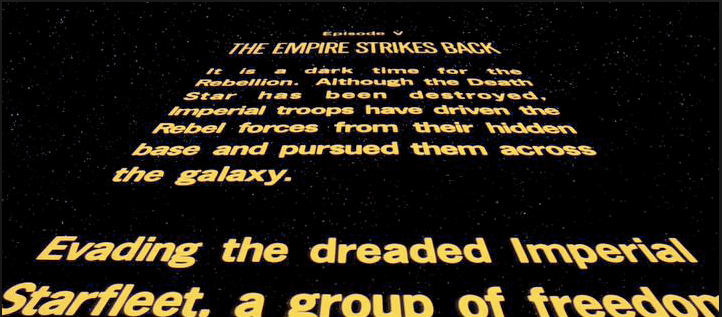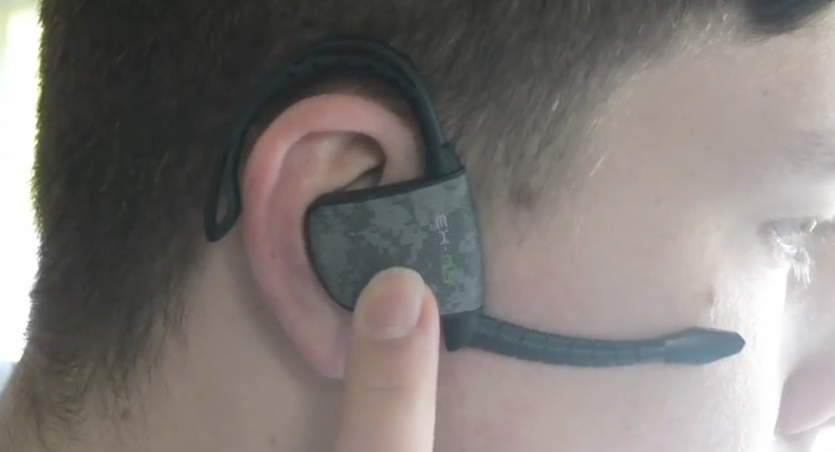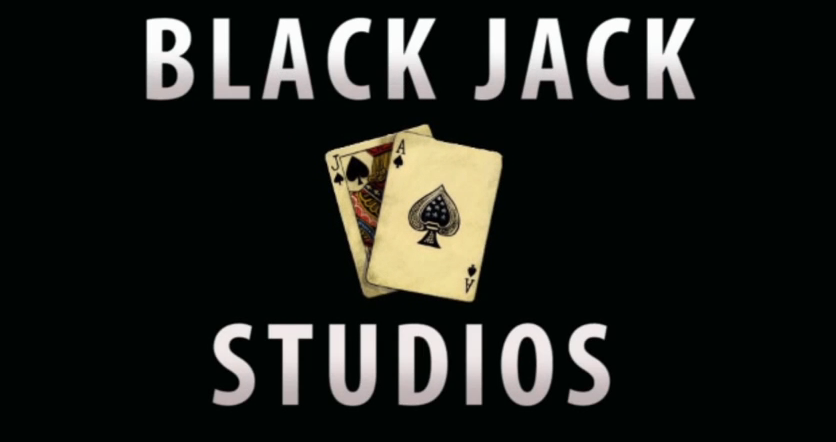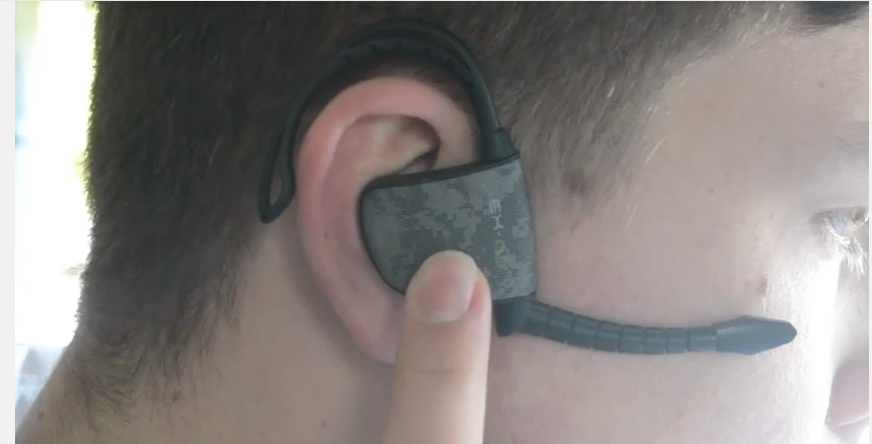I have used many different technologies in the making of my media product. I chose to use many due to my final piece being a visual text. I used:
Research and Planning:
Powtoon
Blogger
Prezi
Youtube
Slideshare
Mac computer
Adobe Premiere
Haiku Dech
Emaze
Survey Monkey
Filming
DSLR camera
GoPro
Tripod
Editing
Adobe Premiere
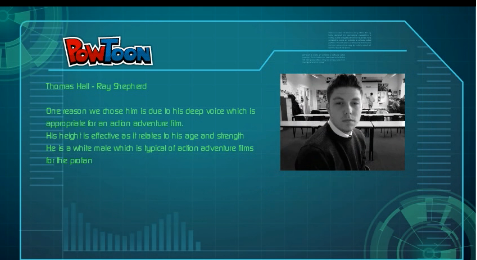 Lots of the technologies were new to me but after being taught the basics by other people or a tutorial I found it quite simple to use most of the technologies. Powtoon was a new piece of technology for me but after the tutorial and multiple uses i found it to be very simple to use. I developed my skills in this as I could make a good Powtoon in a few minutes which was good as it wasn't too complicated and was time efficient. Evidence of this is of the cast, I think this is effective as different characters are shown at different times and the background effect relates
Lots of the technologies were new to me but after being taught the basics by other people or a tutorial I found it quite simple to use most of the technologies. Powtoon was a new piece of technology for me but after the tutorial and multiple uses i found it to be very simple to use. I developed my skills in this as I could make a good Powtoon in a few minutes which was good as it wasn't too complicated and was time efficient. Evidence of this is of the cast, I think this is effective as different characters are shown at different times and the background effect relatesto the action-adventure genre due to it being spy-related. Powtoon allowed me to create cool transitions and a more professional slideshow. Compared to Powerpoint, Powtoon is much better for being creative although it cannot have as much information on it. I found this useful as i could make my work more to the point and concise.
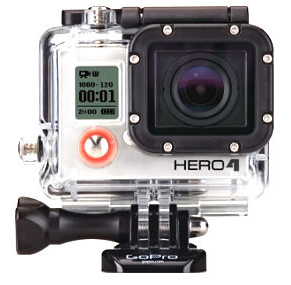 The GoPro was a new technology for me to use. After a quick tutorial i found it to be quite simple as an app on my phone allowed me to see what was being filmed. This let me and my group see if certain shots were good or not and if they needed re-filming in a different way. However in our draft we didn't realise how wide the lens were as we thought we left the camera bags and equipment out of shot but when we put the shot on the Mac we found that it was still in shot. This meant that we had to re-film this part which meant we could improve other shots as well. Also, with the GoPro we found it to be more effective if the camera were to be placed at the top of the nose which gave a more realistic view of what the character would see.
The GoPro was a new technology for me to use. After a quick tutorial i found it to be quite simple as an app on my phone allowed me to see what was being filmed. This let me and my group see if certain shots were good or not and if they needed re-filming in a different way. However in our draft we didn't realise how wide the lens were as we thought we left the camera bags and equipment out of shot but when we put the shot on the Mac we found that it was still in shot. This meant that we had to re-film this part which meant we could improve other shots as well. Also, with the GoPro we found it to be more effective if the camera were to be placed at the top of the nose which gave a more realistic view of what the character would see.The GoPro needed specialist planning before we could use it. We drew out every shot which can be seen on my animatic so we knew exactly what we were filming and how it would look. This let us film efficiently as possible. We had to reshoot a few shots where we used the GoPro as we left the camera bag and equipment in the shot. This happened as we didn't realise how wide the GoPro lens were. Also we had to re-film another shot of the protagonist looking in the bag. We had to re-film this as we didn't realise that you couldn't see what he was actually doing, the centre of the screen was much higher than we would have liked it to be. To fix this we placed the GoPro at the base of the nose which gave a better viewpoint as the lens were much closer to the eyes.
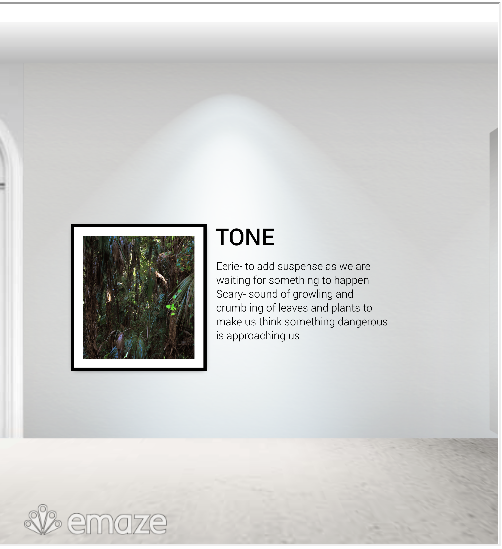
Emaze was also another new technology to me but was very simple to use. It has allowed me to present my ideas in creative ways as whilst i am describing the conventions of Jurassic Park, it is set out in a museum like setting. The transitions take the viewer around the different points which is a unique way of presenting something that could have just as easily been done on Powerpoint but would have been much less effective.
I used Adobe Premiere to produce the whole opening sequence creatively. It allowed me to create the titles which have the sheen effect. This is unique as no other title will be exactly the same to it ,as i had to create it, although i did follow a tutorial that i found on Youtube. I applied this effect to every title on the opening sequence. This meant that my opening sequence will be linked to a certain effect.
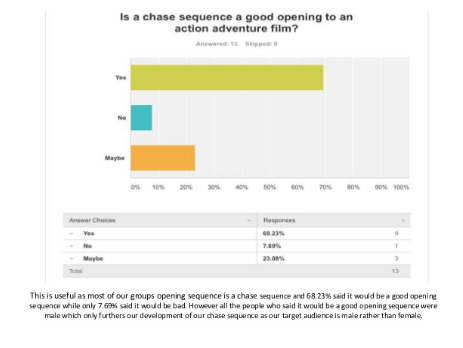 Survey Monkey allowed me to produce my work in a creative way as I could produce graph based on my results. This let me see what things would work within my opening sequence and what aspects
Survey Monkey allowed me to produce my work in a creative way as I could produce graph based on my results. This let me see what things would work within my opening sequence and what aspects
